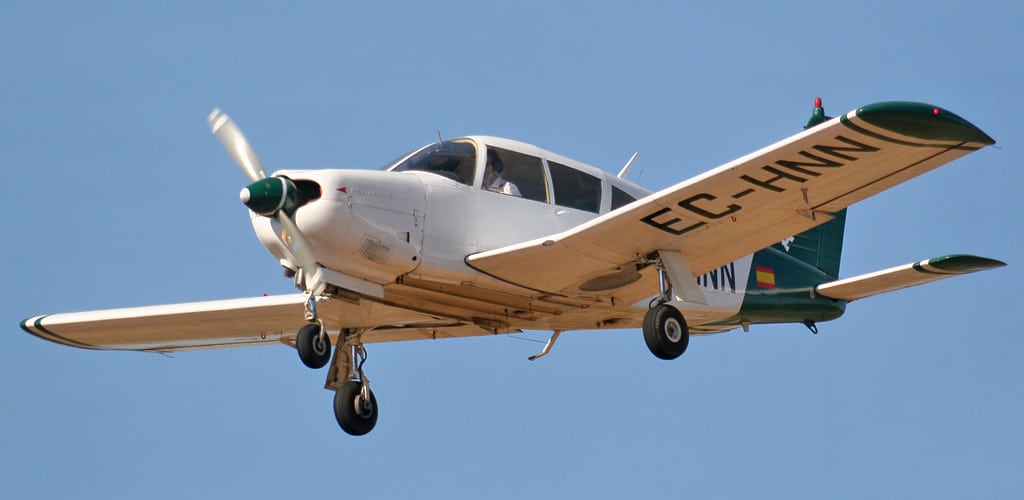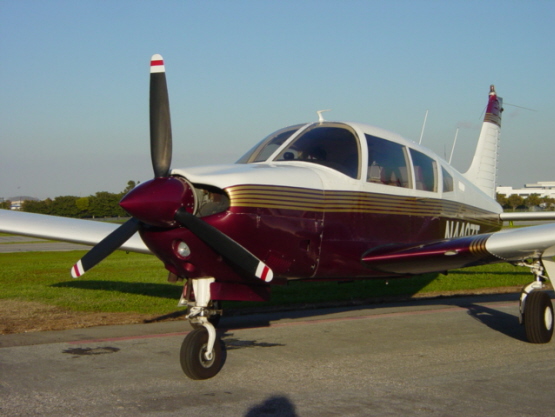Table Of Content

The average cost of a pre-owned Piper Arrow is quoted as around $43,000, but there is a huge amount of variation. The Arrow was introduced in 1967 and featured a constant-speed propeller and retractable landing gear. The Arrow II, which had a stretched fuselage to increase legroom for the rear seat passengers, came out in 1972 and was followed by the Arrow III in 1977. Power management is a bit tricky on the Turbo Arrow with its fixed wastegate.
Unique Landing Gear
The transitioning pilot may therefore tend to yank back a bit too much. Owners quoted speeds at altitude of slightly better than 160 knots in Turbo Arrows in only a few rare instances-usually at 19,000 or higher. One even listed 183 knots at 18,000 feet pulling 75 percent power. But it had an aftermarket intercooler and a Merlyn automatic waste gate.
ENTHUSIASTS & PILOTS - JOIN & SAVE!
In 1979, Piper made a controversial design decision, opting to follow the T-tail design fad. Like many T-tail airplanes, the Arrow IV flies differently than Arrows with conventional tail feathers. The T-tail, depending on airspeed, is either very effective or far less effective than a conventional tail (which isn’t as prone to abrupt transitions between different flying regimes). This occurs because the stabilator sits up out of the propwash, and so is less effective at low airspeeds. Many pilots complain that the Arrow IV has squirrelly low-speed performance, with a tendency to over-rotate on takeoff. Others, who don’t try to fly the Arrow IV like the earlier models, look more favorably upon the T-tail.
Four-Seater Buyer's Guide - Plane & Pilot
Four-Seater Buyer's Guide.
Posted: Wed, 08 Nov 2023 08:00:00 GMT [source]
Wing Design
Do that with the Turbo Arrow, though, and you’d get a red “overboost” light very soon, often followed by your mechanic’s bill for the subsequent inspection. Instead, the favored technique was to run up the MAP to no more than 30 or so inches early in the takeoff roll, then forget about it while monitoring the other engine gauges and keeping the centerline straddled. At one time, a normally aspirated 200-HP Piper Arrow was our go-to aircraft for travel around the Northeast and occasional hauls from Connecticut to the Carolinas. While the Arrow lacked the excitement of a Mooney 201, it was stone simple to fly, had reasonable operating costs and most important to our mission—it delivered good dispatch reliability.
- 1987 PIPER PA-28RT-201 Arrow IV
Rather than tur- bocharge the Lycoming IO-360 that had been a staple of the Arrow since its 1967 introduction, Piper lifted the powerplant from the Seneca II, a non- intercooled, fixed-wastegate Continental TSIO-360. Though capable of 220 hp in some applications, the Arrow received the -F version of the six-cylinder rated at 200 hp on 2,575 rpm. Initial TBO was 1,400 hours, which was upgraded to 1,800 hours on the -FB engine, a result of stronger connecting rods. The -FB became standard in the Turbo starting in 1979, and a good percentage of the -F engines have been upgraded to -FB status at overhaul time. The TSIO- 360 would prove to be the heart of the Turbo's new-found high-altitude performance and the soul of its maintenance troubles.
Short Final: More Information, Please
The aircraft has been a joy, with no extraordinary, massive expenses, other than the paint, avionics and interior, which were my choices. The ostensibly nifty benefits of this system are much lower turbo speeds, lower engine RPM settings at all altitudes and generally allowing lower engine operating temperatures. The gear plops out seconds before splash down—sending the Arrow head over heels. The new wing improved performance somewhat, most notably in terms of glide. It also gave pilots a healthy 24-gallon increase in fuel capacity.

The automatic gear extension system was a player in two high density altitude takeoff accidents. Neither pilot understood that the system would keep the gear down until it sensed enough airspeed—which wasn’t reached. Neither knew that the solution is to use the override feature on the system and get the gear up so the airplane will accelerate and climb. One pilot landed on the rising terrain ahead of him; the other thought the engine wasn’t making power so he slid the mixture control to rich—and then it really wouldn’t make power at that altitude. The Turbo Arrow's engine dominates most discussions of the model and for good reason; the airframe is basically the same as the venerable Arrow. Piper fitted the tapered wing to the Arrow at the Turbo's introduction, boost- ing slightly the nonturbo model's performance and dramatically adding to fuel supply, up from 48 gallons to 72 gallons.

When it comes to maintenance, owners should look out for wing spar cracks, as also mentioned above, and as tends to occur on all PA28 aircraft. This could cause difficulties for passengers unfamiliar with light aircraft or who need assistance climbing aboard or getting out. Indeed, in an emergency, it could even prevent everyone from leaving quickly, although I have never heard of this being the cause of an accident. But some pilots do not like PA28s for this reason, and it is certainly worth bearing in mind.
Piper Arrow Marketplace
There is a second pitot tube, located on the left side of the cabin, for the automatic gear system. So, yes, it's true the Turbo Arrow was flawed, a result largely of cost-cutting. But as time seems to heal all wounds, it is working its magic on the Turbo Arrow.
Eight were built that year, none in 1991, six in 1992, and only one in 1994. This was also the time when Piper was on the rocks, and searching for a buyer. These planes are specifically designed to be easy to fly, which makes them a popular choice for first-time buys and new pilots. The new T-tail design released in 1979 was meant to bring reduced cabin noise and enhanced handling characteristics to the Arrow. Unfortunately, the subsequent decrease in pitch control during landing approach speeds caused Piper to back away from the T-tail by the end of the 1980s.
Above that, though, the Turbo airplane begins to make tracks, culminat- ing in a 75-percent cruise speed of 168 knots at 18,000 feet. The Mooney runs away from the rest in speed and efficiency, which have great value. This is food for thought, since the Arrow is no faster than, say, a Grumman/AGAC Tiger, an airplane that delivers this performance on 20 less horsepower with a fixed-pitch prop and fixed landing gear. It costs about 15 to 20 percent less to buy, and less to maintain.
In fact, it is so similar that it has been described as a repurposed Cherokee. However, it differs from the earlier models in one important way – it has retractable landing gear, providing extra speed and saving fuel when compared with fixed-wing trainers. This is food for thought, since the Piper Arrow is no faster than, say, a Grumman/AGAC Tiger, an airplane that delivers this performance on 20 less horsepower with a fixed-pitch prop and fixed landing gear. Commercial or passenger aircraft are usually designed for optimum performance around their cruise speed (VC) and cruise altitude. Factors affecting optimum cruise speed and altitude include payload, center of gravity, air temperature, and humidity.
The ostensibly nifty benefits of this system are much lower turbo speeds, lower engine RPM settings at all altitudes and in generally allowing lower engine operating temperatures. Make sure the gear drive flexible coupling, Continental Part , is checked whenever you pull the alternator, as it may be the source of failure, warned one owner. In general, pilots described maintenance to us costs as high, or manageable. On the other hand, on the Turbo Arrow, engine-related accidents outnumbered gear-related accidents by 24 percent.
The Arrow handles much like any PA-28, which is to say its fairly benign. Stalls are a non-event, which is in contrast to airplanes like the Mooney; the latter will reward a slightly off-center ball with a sharp wing drop. The wing loading is lower than higher-performance retractables like the Bonanza/Debonair and Mooney, which means a less solid ride in turbulence and lower speeds. When Piper emerged from bankruptcy several years ago, the Arrow was promptly back in production. Its essentially the same airplane as the conventional-tail Arrow IV, with a 2001 base price of $249,700, which includes a good instrument package but no autopilot. The Piper Arrow has cruise speeds ranging from 130 to 143 knots, with turbocharged versions getting up to as much as 170 knots.
The total cost to keep the Arrow flying a year is around $9000, including insurance, engine reserves, hangar lease, annuals, upgrades and navigation databases. During the summer at a high-power climb (75 percent or greater), an unmodified Turbo Arrow shows cylinder head temperatures near the 460 degrees Fahrenheit redline. Even with full-rich mixture and a shallow climb angle, the CHT gauge often shows a needle's width or two just under the red, where it will stay until level-off. Piper did not fit the Turbo Arrow with cowl flaps — unlike in the Seneca, where the TSIO-360 has a marginally better reputation. Later, starting with the 1984 models, additional cooling louvers appeared on the bottom of the cowling, which helped keep CHTs in line; this kit is available for retrofit.
Other common complaints include less-than-desirable performance at low speeds and over-rotation on takeoff, but again these are minor and could be found on many models. The consensus of flying the Arrow is that it is reliable, competent, and overall unremarkable. That may not sound like high praise, but for pilots making that transition to retractable gear aircraft, an unremarkable flight in an easy to fly plane is the goal, and the Arrow delivers.



